Kebec – an Algonquian word meaning place where the river narrows.
Driving east through Ontario, we drove into the province of Quebec via the Trans-Canada Highway where to our surprise the highway signage for necessary navigation information is now in French. No English, just French.
“1969: Following the Royal Commission on Bilingualism and Biculturalism, the Canadian government passes the Official Languages Act, which recognizes English and French as the official languages of Canada, affirms their equality in Parliament and the federal courts…”
French is the primary language in Quebec City, but in most service establishments at least one employee speaks English, however minimally.
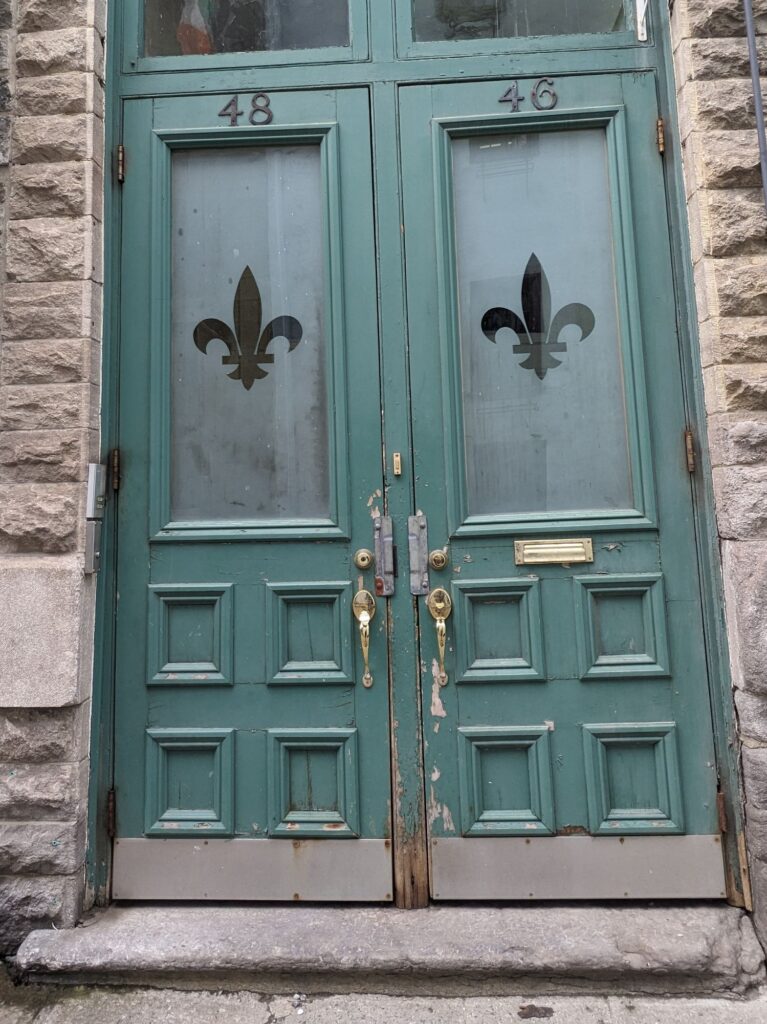
The Fleur-de-lis design is found in ancient history and has long been associated with the French crown. It is seen everywhere in Quebec City. And is notably the provincial flag of Quebec.
A Distinctive National Reference. Since the early days of New France, the inhabitants of Quebec have been known as “Canadiens.” Beginning in the 19th century, they were more often referred to as French Canadians and, since the early 1960s, have been known as Québécois.
Day One – Rain, rain, rain. However, we were anxious to spend our whole 2 days as tourists in the city. We drove to the Levis Ferry Terminal from our campgrounds Camping Transit, paid for parking and rode the ferry across the St. Lawrence River to Quebec City. Climbing narrow streets and stairways to the upper city we located the Red Bus – the Hop On, Hop Off Bus . We only hopped off once. But what a perfect stop as we wandered the shops and restaurants for a perfect lunch location. We found it at Cafe Krieghoff and had what felt like a perfectly Québécois experience – as tourists. The bus ride gave us a thorough overview to make plans for tomorrow.
After returning to Savannah, the van, and discovering a $175.00 parking ticket – reason: because vehicles that can be slept in (campervan) are not allowed to park in that lot. Fortunately, Rock who is Camping Transits host was able to ‘take care’ of the ticket for us. Day Two we took advantage of Camping Transits free shuttle service to the Ferry Terminal.
To preserve the Old Québec’s architectural heritage, the Government of Québec declared it a historic district in 1963. UNESCO seconded the motion in 1985 by adding the district to its list of World Heritage sites.

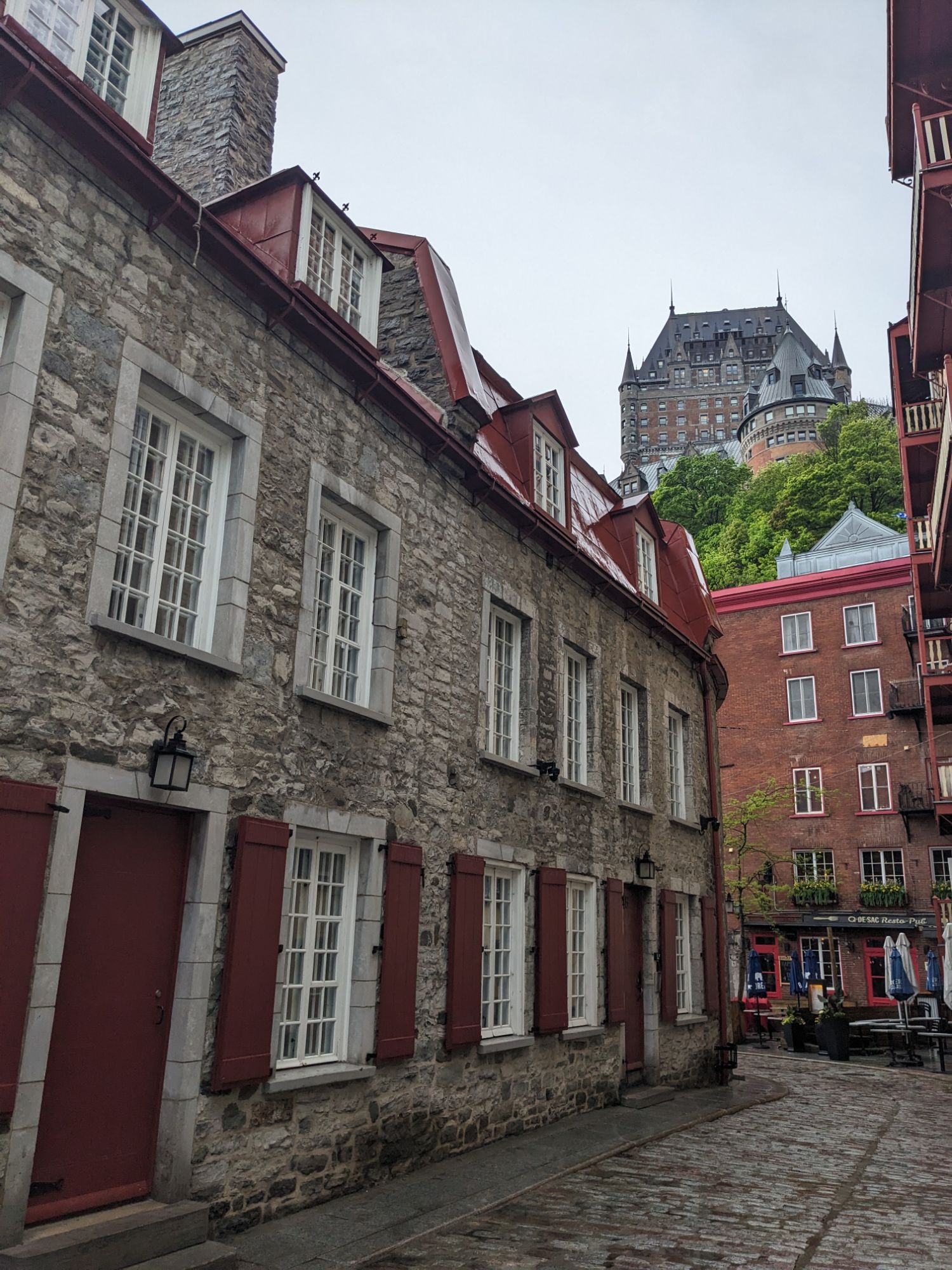
Quaint cafes and expensive restaurants provide outdoor seating or open air indoor seating.
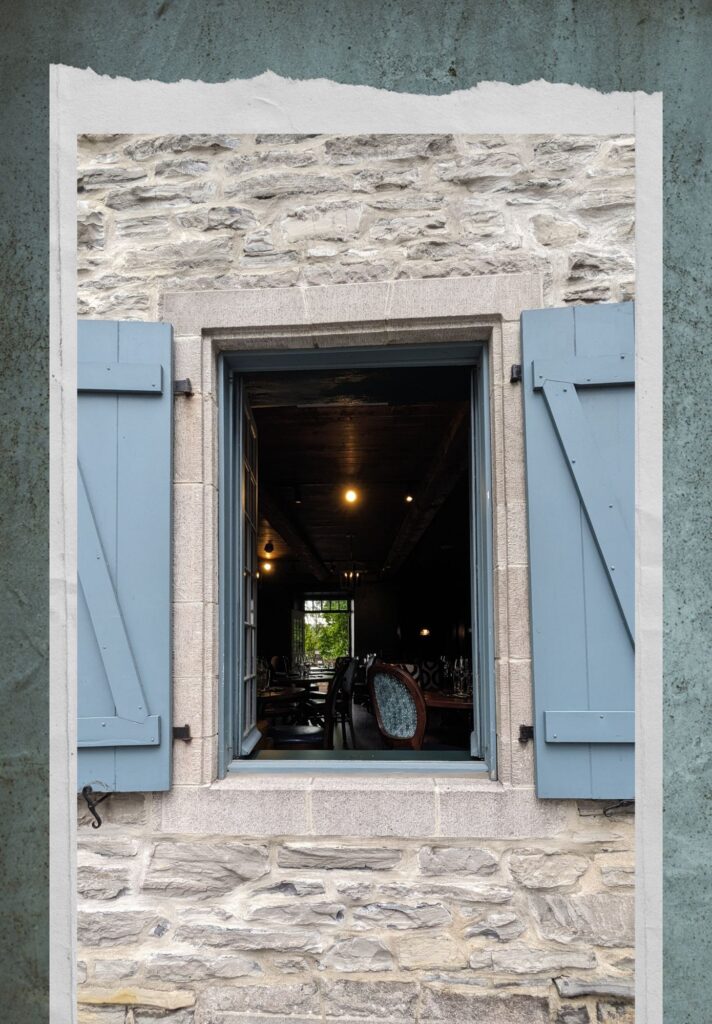
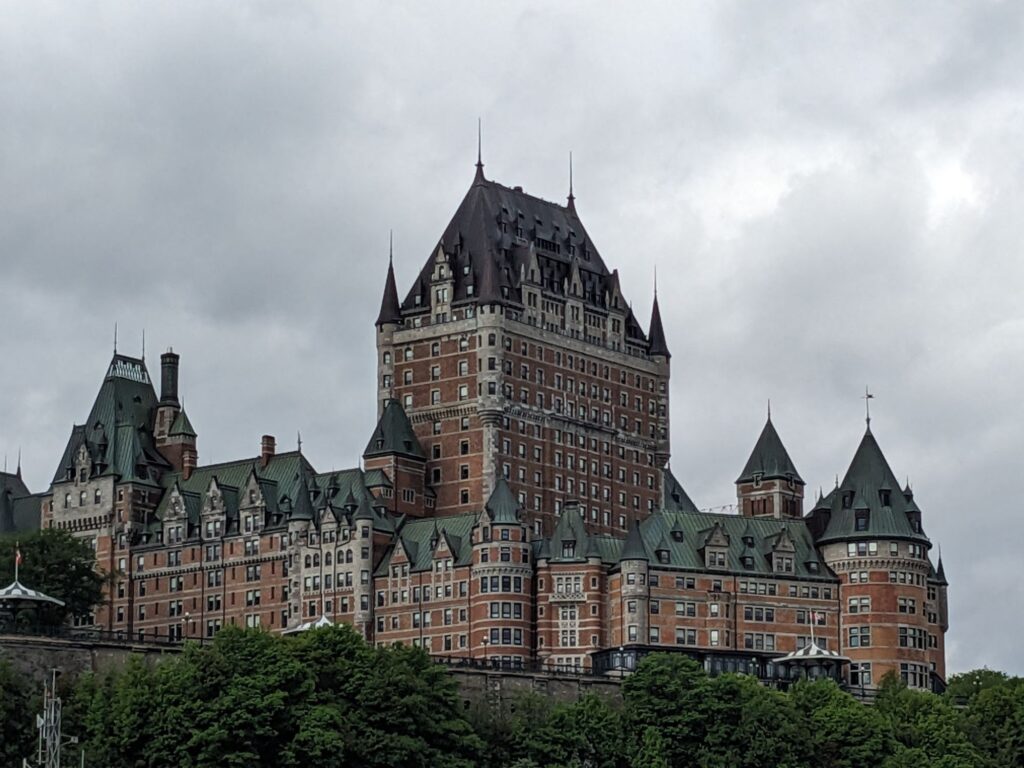
Quebec comes from the Algonquin word, KEBEC, which means the narrowing of the river, a strategic location to built a fortress. “Though the Château Frontenac has been a Quebec City icon since 1893, the high ground it occupies has been of vital strategic importance since the city was founded in 1608. In the early 17th century, Samuel de Champlain, the “father of New France,” built a fort here to defend his new settlement.”

Quebec’s Old Town is the only North American fortified city north of Mexico whose walls still exist.
MUSEUM OF CIVILIZATION In addition to the exceptional exhibit on Inuit Peoples, the exhibit which exhausted the majority of my attention was completely unanticipated. Providing headsets that were prompted by GPS location to inform throughout the exhibit, the initial introduction suggested one keep an open mind. It was a thoroughly engaging and educational experience. Title: “Word is Bond. The Sound of Rap Queb”. The exhibit brings one from the origins of slaves communicating thru song to the explosion in the early 1970’s from African Americans and Afro-Caribbean immigrants in the Bronx. “The hip-hop culture was, and still is, considered a symbol of a rich and diverse culture. It helps to raise awareness about social issues and inspires important cultural changes.” I went away with an appreciation for rap, hip-hop (street dance), and street art.
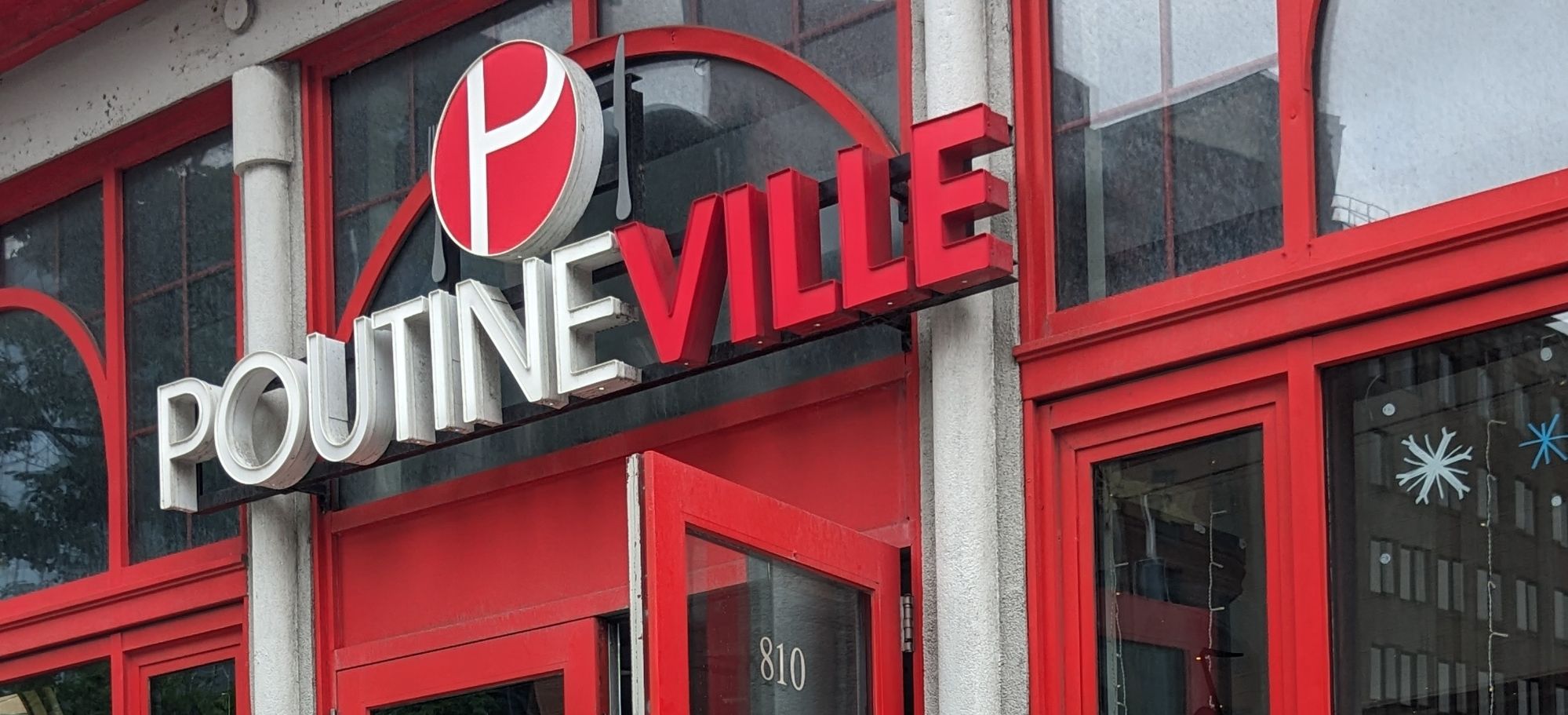
Day Two – an impulsive lunch stop: we went to the heart of Canadian Cuisine and shared a plate of poutine mixed with roasted vegetables. “Poutine is a dish of french fries and cheese curds topped with a brown gravy. It emerged in Quebec, in the late 1950s in the Centre-du-Québec region, though its exact origins are uncertain and there are several competing claims regarding its invention.” It was delicious.
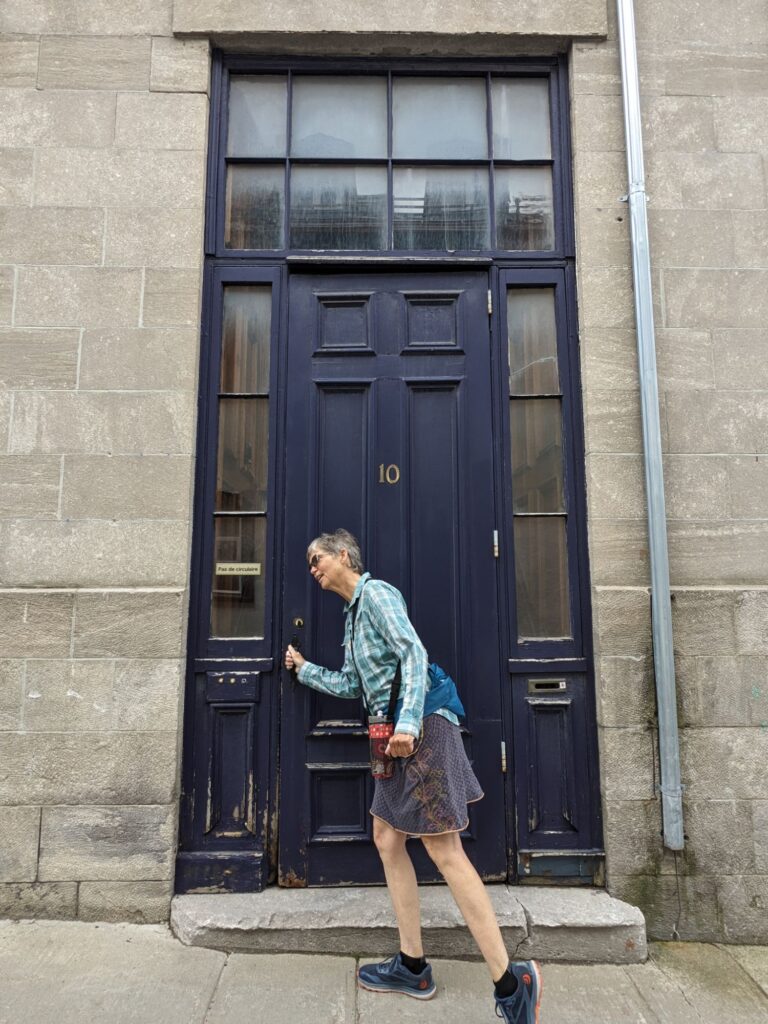
A full day of exploring the back streets: Marilyn is tall. This is an exceptionally tall doorway!
Discovering unusual architectural styles.
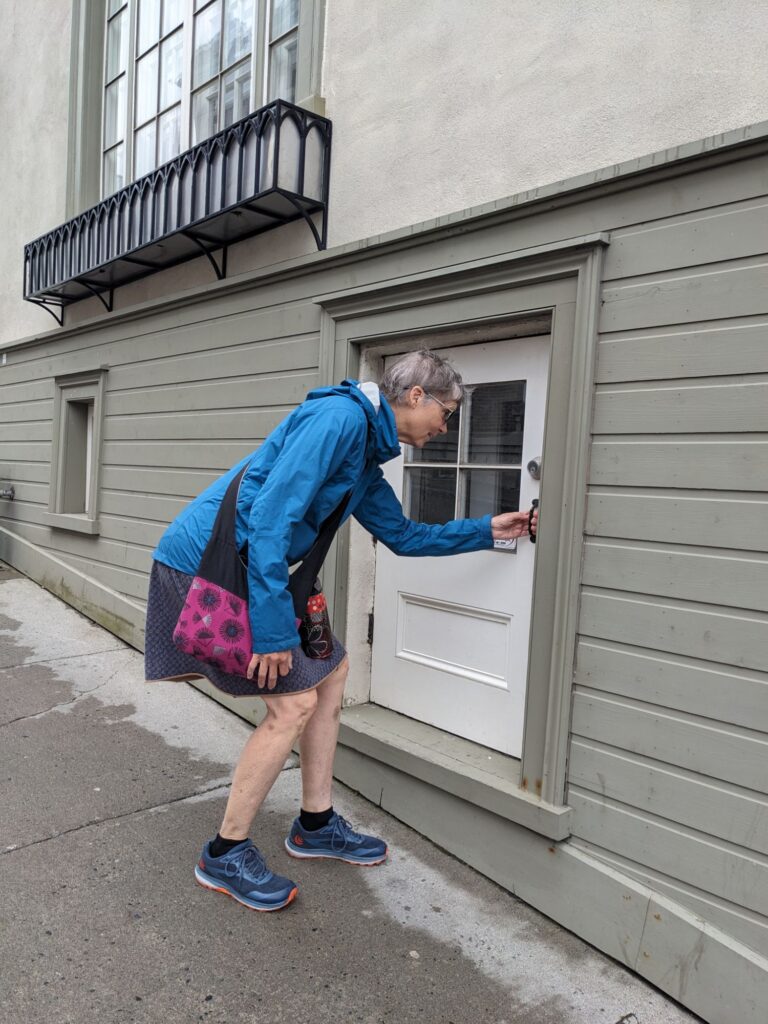
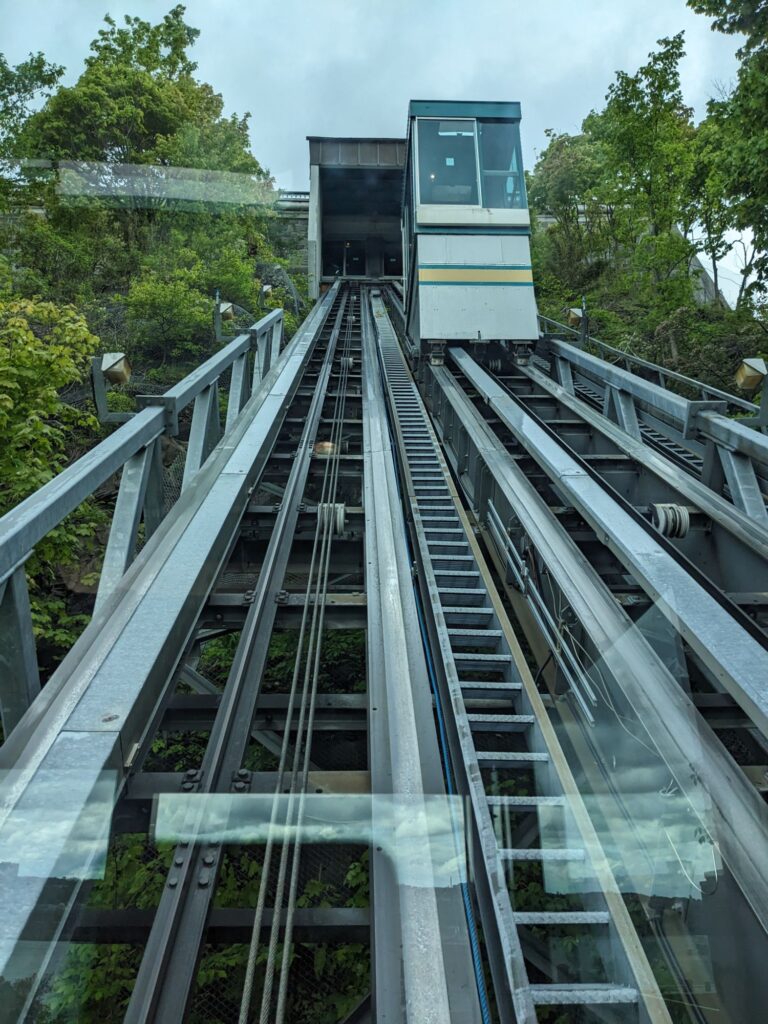

We walked up steep and narrow streets and stairs to access upper Quebec City on Day 1. Day 2 we took the inexpensive funicular to save our energy.
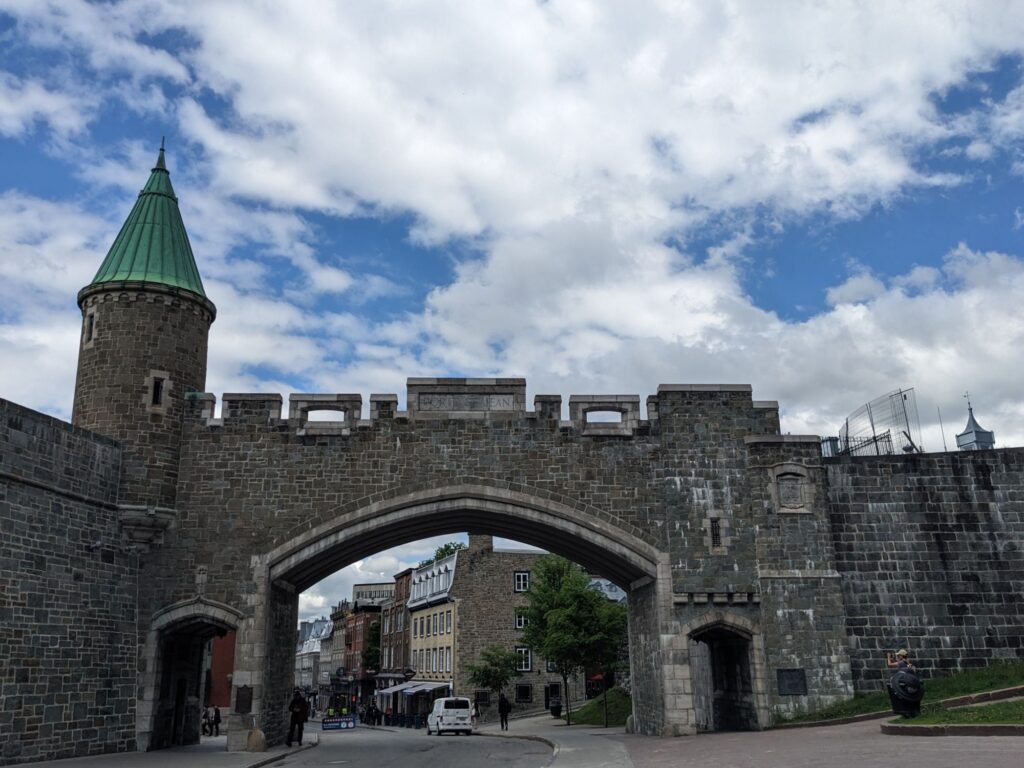
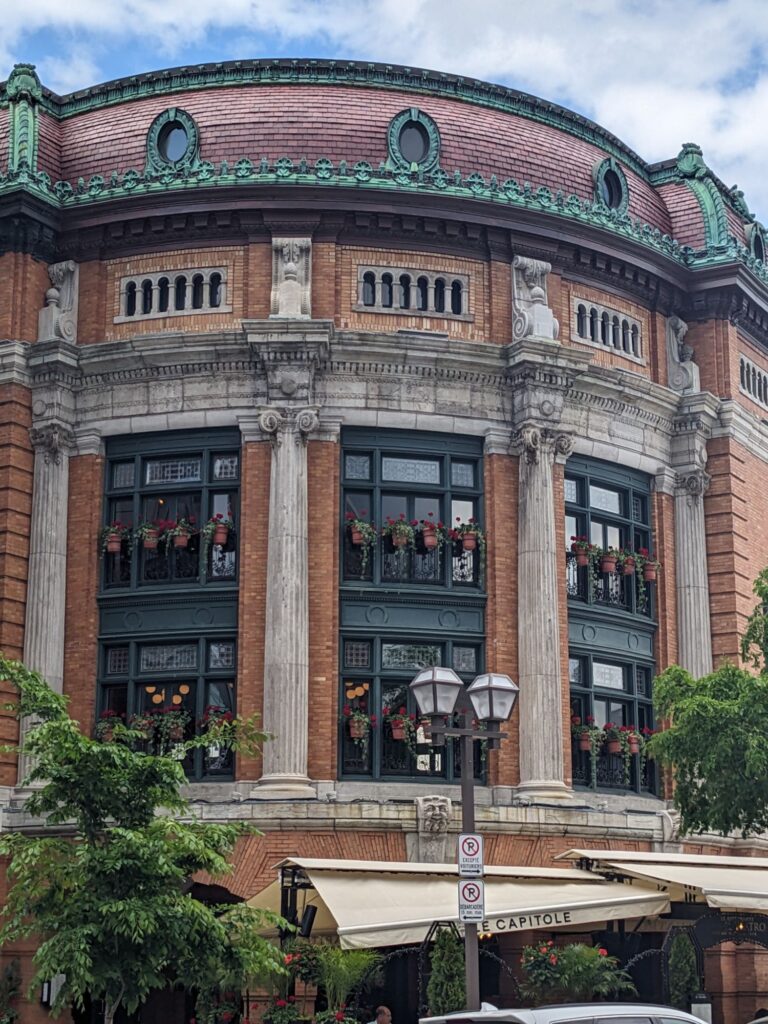
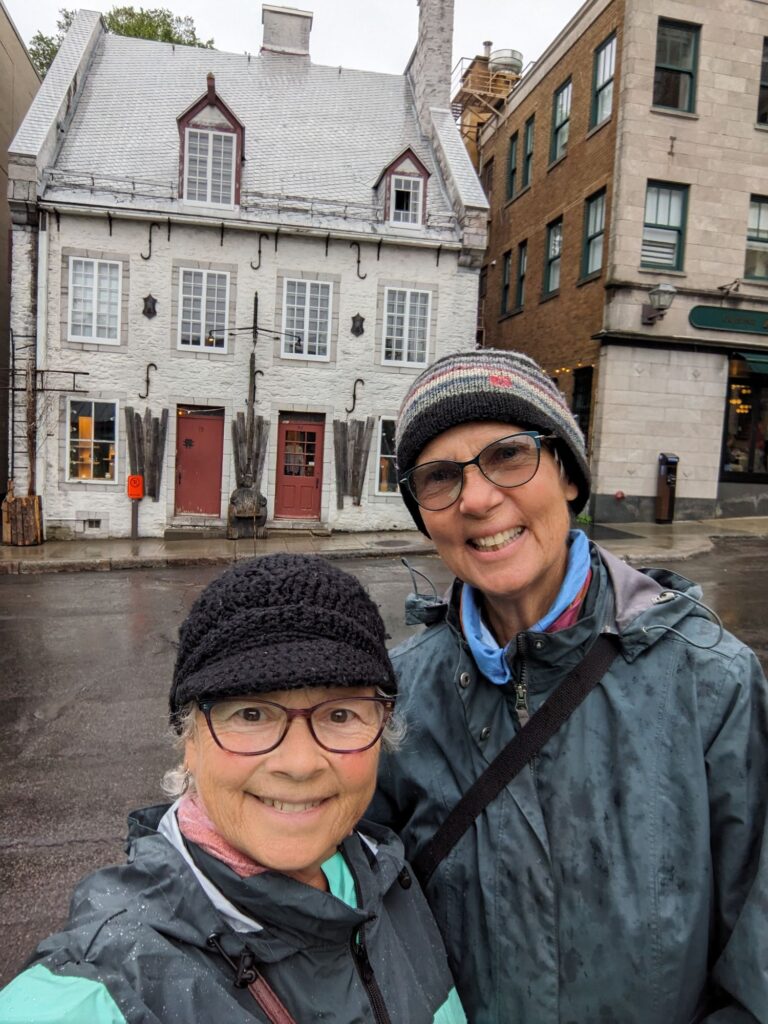
Browsing deli’s for unique and locally sourced goodies; people watching while listening to street musicians; Art Galleries; all manner of small shops and boutiques; textile touching – one of Marilyn’s favorite things to do; bookstores with familiar books but written in French; sweet shops, popcorn shops, cafes.
A memorable time touristing in Quebec City
Arrived May 26, Departed May 29
Book on tap: Bury Your Dead, by Louise Penny A perfect read for visiting Quebec City
